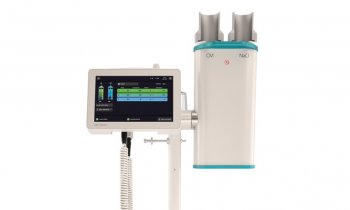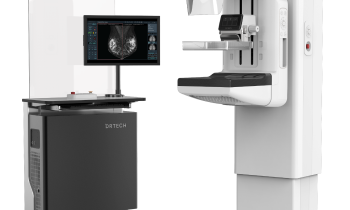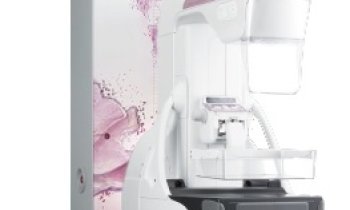Cancer under costs control
Doctors have to fulfil two jobs, which seem to be diametrically opposed: They have to provide the best care for their patients and simultaneously have to think economical. Researchers found that rising health care costs in cancer care make it necessary for clinicians to be aware of the relative costs of new interventions.
The growing number of cancer treatment options and their widely varying costs suggest an increased need for oncologists to understand economic issues in cancer care and be able to discuss these issue with their patients, according to a study by researchers at the University of Texas M.D. Anderson Cancer Center and RTI International.
The study, published in the July/August issue of CA: A Cancer Journal for Clinicians, found that rising health care costs as well as health care budget constraints have made it necessary for clinicians to be aware of the relative costs and benefits of new interventions used in cancer screening, diagnosis, treatment and support services for patients.
"A doctor's job is to provide the best care for his or her patients," said Michael Halpern, M.D., Ph.D., a senior researcher at RTI International and the study's co-author. "Unless clinicians, other cancer health care providers, and cancer researchers are active participants in discussions regarding the costs and benefits of new interventions, others will make these cost-effectiveness conclusions."
Many new cancer interventions may help specific populations but also result in much higher costs such as magnetic resonance imaging screening for breast cancer, which at $1,000 per image is ten times the cost of screening mammography.
Other examples include $48,000 per patient per year for the use of intensity-modulated radiation therapy to treat prostate cancer, $50,000 per patient per year for trastuzumab (Herceptin) in the treatment of HER- 2 positive breast cancer, and more than $8,000 for a six-day course of palifermin (Kepivance) to treat oral mucositis.
"In our country's medical system, patients are often required to pay for a proportion of their medical care," said Ya-Chen Tina Shih, Ph.D., an associate professor at the University of Texas M.D. Anderson Cancer Center and the report's lead author. "As the growth of medical care costs outpaces general inflation, patients are spending an increasing proportion of their family incomes on medical care. In addition, limited health care funds require medical care to be prioritized to determine the most reasonable use of those funds. These factors make it increasingly important for clinicians to consider the economic aspect of cancer treatments so they are providing their patients with information on the costs and benefits of different treatment options."
The report provides a review of the methods used for economic analyses to help clinicians understand how economic evaluations of cancer interventions are performed so they are better able to use, and critique, these evaluations.
About RTI International
RTI International is one of the world's leading research institutes, dedicated to improving the human condition by turning knowledge into practice. Our staff of more than 2,600 provides research and technical services to governments and businesses worldwide in the areas of health and pharmaceuticals, education and training, surveys and statistics, advanced technology, international development, economic and social policy, energy, and the environment. RTI also employs about 1,200 term employees who support projects in more than 40 countries. For more information, visit http://www.rti.org.
The study, published in the July/August issue of CA: A Cancer Journal for Clinicians, found that rising health care costs as well as health care budget constraints have made it necessary for clinicians to be aware of the relative costs and benefits of new interventions used in cancer screening, diagnosis, treatment and support services for patients.
"A doctor's job is to provide the best care for his or her patients," said Michael Halpern, M.D., Ph.D., a senior researcher at RTI International and the study's co-author. "Unless clinicians, other cancer health care providers, and cancer researchers are active participants in discussions regarding the costs and benefits of new interventions, others will make these cost-effectiveness conclusions."
Many new cancer interventions may help specific populations but also result in much higher costs such as magnetic resonance imaging screening for breast cancer, which at $1,000 per image is ten times the cost of screening mammography.
Other examples include $48,000 per patient per year for the use of intensity-modulated radiation therapy to treat prostate cancer, $50,000 per patient per year for trastuzumab (Herceptin) in the treatment of HER- 2 positive breast cancer, and more than $8,000 for a six-day course of palifermin (Kepivance) to treat oral mucositis.
"In our country's medical system, patients are often required to pay for a proportion of their medical care," said Ya-Chen Tina Shih, Ph.D., an associate professor at the University of Texas M.D. Anderson Cancer Center and the report's lead author. "As the growth of medical care costs outpaces general inflation, patients are spending an increasing proportion of their family incomes on medical care. In addition, limited health care funds require medical care to be prioritized to determine the most reasonable use of those funds. These factors make it increasingly important for clinicians to consider the economic aspect of cancer treatments so they are providing their patients with information on the costs and benefits of different treatment options."
The report provides a review of the methods used for economic analyses to help clinicians understand how economic evaluations of cancer interventions are performed so they are better able to use, and critique, these evaluations.
About RTI International
RTI International is one of the world's leading research institutes, dedicated to improving the human condition by turning knowledge into practice. Our staff of more than 2,600 provides research and technical services to governments and businesses worldwide in the areas of health and pharmaceuticals, education and training, surveys and statistics, advanced technology, international development, economic and social policy, energy, and the environment. RTI also employs about 1,200 term employees who support projects in more than 40 countries. For more information, visit http://www.rti.org.
14.07.2008
More on the subject:










